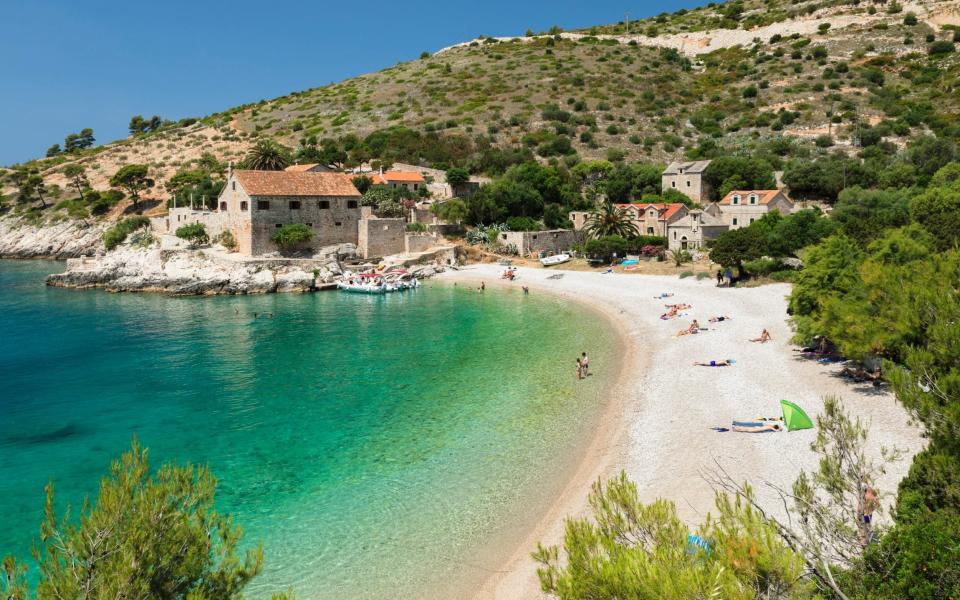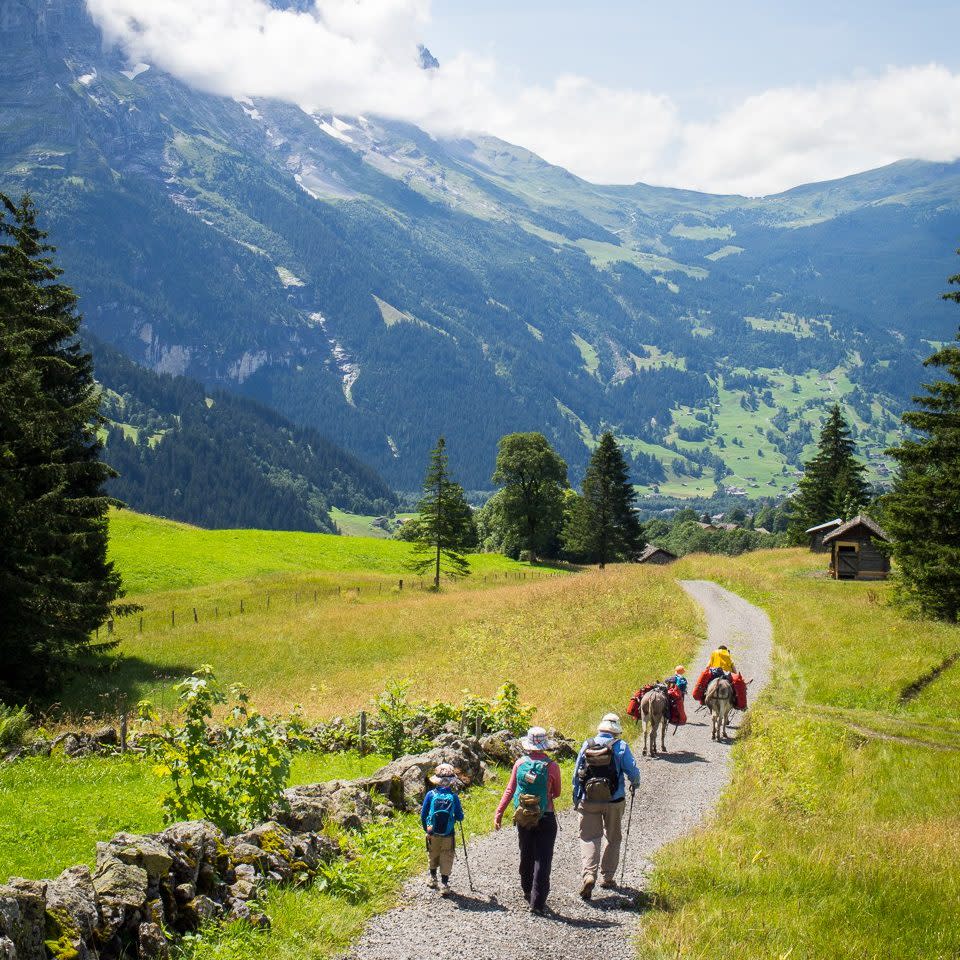The countries that could go green, amber and red this week

The three-week traffic light update has come around once again and today we are due to learn which countries will turn green and amber or join the red list.
Currently, arrivals from sole entrant France face a 10-day quarantine (even if fully vaccinated) after the country was put on the amber plus’ list.
However on August 4, it was announced that France would be removed from the 'amber plus' list from 4am on Sunday, August 8, ending the requirement for fully jabbed holidaymakers to quarantine on their return to England.
Elsewhere, there have been more positive signs in terms of the potential expansion of the green list, with research suggesting 17 more countries meet the criteria to be promoted.
Furthermore, pressure on ministers to significantly grow the low-risk list has increased after it emerged that Rishi Sunak, the Chancellor, wrote to Boris Johnson last month urging him to lift restrictions on foreign travel to allow the UK to compete with EU countries that have relaxed their border controls.
Virus and vaccine data will be analysed by the Joint Biosecurity Centre (JBC) this week before ministers decide which countries should be red, amber or green based on the risk of travellers importing Covid-19 and its variants.
How does the Government decide the traffic lights?
While we do not know the exact numbers that qualify a country for red, amber or green status, we do know that the Government uses the following criteria to decide the traffic lights:
The percentage of a country’s population that have been vaccinated
The rate of infection
The prevalence of variants of concern
The country’s access to reliable scientific data and genomic sequencing
What are the restrictions on green list arrivals?
People coming from green list countries have to provide a negative Covid test within 72 hours of travelling home, and then pay for a PCR test on or before their second day back in the UK. There is no need to enter a mandatory 10-day isolation if returning from a green list destination.
What are the restrictions on amber list arrivals?
If double jabbed two weeks ago or more, restrictions are the same when returning from green or amber destinations. So a test within 72 hours of travelling home, then a PCR test on or before the second day of arriving home.
If you have not received both doses within two weeks of arriving back in the UK, it will mean a 10-day quarantine when returning from amber destinations, with mandatory PCR tests on days two and eight. You have the option to ‘release’ from quarantine by taking a test on day five.
All arrivals from ‘amber plus’ list France, must quarantine for 10 days (with the option of taking a test to release early), even if they have been fully vaccinated.
Which countries are currently green?
Anguilla (green watchlist)
Antarctica/British Antarctic Territory (green watchlist)
Antigua and Barbuda (green watchlist)
Australia
Barbados (green watchlist)
Bermuda (green watchlist)
British Indian Ocean Territory (green watchlist)
Brunei
Bulgaria
Cayman Islands (green watchlist)
Croatia (green watchlist)
Dominica (green watchlist)
Falkland Islands
Faroe Islands
Gibraltar
Grenada (green watchlist)
Iceland
Israel (green watchlist)
Hong Kong
Madeira (green watchlist)
Malta
Montserrat (green watchlist)
New Zealand
Pitcairn, Henderson, Ducie and Oeno Islands (green watchlist)
Singapore
South Georgia and South Sandwich Islands
St Helena, Ascension and Tristan da Cunha
Taiwan (green watchlist)
Turks and Caicos Islands (green watchlist)

Which destinations could go green this week?
Though restrictions have eased on amber list travellers, for those with a single dose, or no vaccine at all, the green list remains important for immediate holiday prospects. It is also worth noting the FCDO still advises against non-essential travel to certain amber list countries, including Italy, making insurance more difficult to secure. Green destinations also don’t carry much risk of being dumped on the red list.
Research by The PC Agency, a travel consultancy, suggests 12 destinations meet the criteria to be promoted to the green list: Germany, Poland, Canada, Austria, Romania, Bosnia, the Czech Republic, Hungary, Latvia, Lithuania, Slovakia and Slovenia.
All 12 countries have infection rates below 30 cases per 100,000 of the population and most have also fully jabbed more than half their adult populations.
Five other countries have low enough infection rates to join the “green watch list”, defined as being at risk of going amber. The contenders are: Bhutan, French Polynesia, North Macedonia, Norway and Saudi Arabia.
Here are the key statistics for some of the more popular destinations with UK travellers, which seemingly meet the criteria to go onto the green list, or green watchlist, in this week’s update. For context, the UK’s infection rate stands at 279.58 per 100,000.
Canada
Seven-day case rate: 13.31 per 100,000
Double jab rate: 70.85%
Germany
Seven-day case rate: 18.21 per 100,000
Double jab rate: 60.3%
Czech Republic
Seven-day case rate: 12 per 100,000
Double jab rate: 53.99%
Hungary
Seven-day case rate: 4.04 per 100,000
Double jab rate: 65.12%
When will France come off the amber plus list?
France is to be removed from the “amber plus” list. The changes come into effect at 4am on Sunday, August 8, and government sources indicated that anyone who arrived back in the UK from France before that date would still have to complete a full 10 days of quarantine.
The lifting of quarantine for travel to France follows a fall in beta variant cases in the country to just 0.8 per cent of all infections.
France’s infection rates were up 21.42 per cent in a week to 253.23 per 100,000. However, cases still remained lower than the UK and the country’s amber plus rating was explained by its levels of the beta variant, feared to be more vaccine resistant.
Last week confusion reigned with Foreign Secretary Dominic Raab appearing to put the amber plus decision down to cases of the beta variant on the island of Reunion, thousands of miles from the mainland.
However, on Friday, Transport Secretary Grant Shapps told BBC Radio 4's Today programme: "It was actually the cases the [JCB] were picking from France – there has been some discussion about whether those cases were from Reunion, they may have started there but they were measured in France."
Asked about the rate of beta variant cases in France, he said: "It looks like it has been trending downwards... the Joint Biosecurity Centre will be looking at France and providing fresh advice on where that should sit in the system."

Which countries could be added to an amber watchlist?
An amber watchlist would be an unwelcome addition to the traffic light system for many travellers, who would fear being subjected to mandatory hotel quarantine on return (at a cost of £1,750 per person), if their destination turned red while they were away.
Looking at the current rates, Britain’s favourite holiday destination Spain would be at risk of joining such a category, with its high infection rate of 356.4 per 100,000. However, cases are starting to fall following a raft of soft restrictions in the country including late night curfews. Recent data also shows the country has declining rates of the beta variant, which stand at 2.9 per cent of cases, down from nine per cent.
Elsewhere, holiday favourite Greece has rising rates (182.17 per 100,000), with police being deployed on tourist islands to ensure Covid measures are enacted. Last week, the Greek deputy civil protection minister Nikos Hardalias said Mykonos, along with the island of Ios, was “one step” away from authorities imposing further restrictions, and signalled concern over rising Covid cases in Zakynthos, Tinos, Lefkada, Santorini, Paros and Rhodes.
Critics in the travel industry have claimed that the amber watchlist policy would serve only to provoke fear, and that the risk of a major European country being placed on the red list was low, due to the sheer numbers of holidaymakers being forced into hotel quarantine. They claim that not only would the Government find it difficult to source sufficient hotel rooms but it would have a severe impact on the economy.
Could any countries come off the red list?
Research from the PC Agency suggests four countries – Bahrain, India, Kenya and Pakistan – have seen their infection rates fall sufficiently to be moved from red to amber. However, hopes aren’t too high as no country has moved off the red list since its introduction, despite falling infection rates.
Many holidaymakers will be keen on an update from popular holiday destinations the Maldives and UAE. Both have had successful vaccine rollouts (61.64% and 70.6% fully vaccinated, respectively) and recently declining cases. The Maldives has a seven-day rate of 147.32 per 100,000 while the UAE rates stand at 108.6 per 100,000 – both significantly lower than the UK.
There are also growing sounds of discontent amongst MPs about the continued red list travel restrictions. A senior Tory MP told the Telegraph: “We need to open up the Middle East. The [international exhibition conference] starts in Dubai in two months and we can’t have a situation where British people cannot go and showcase their businesses.”

